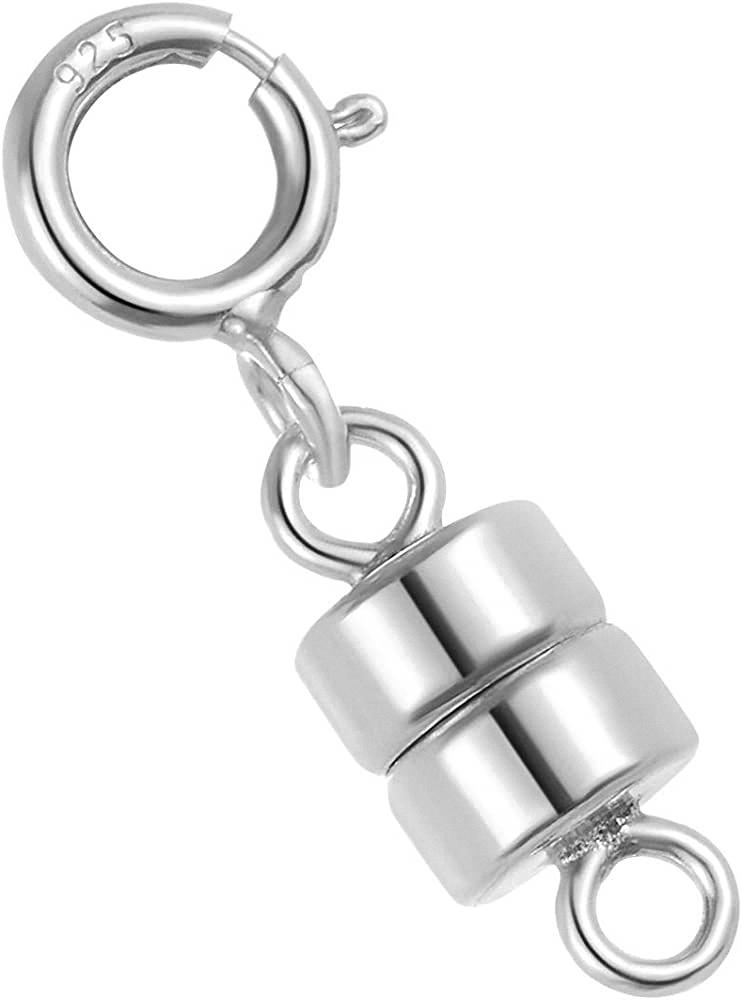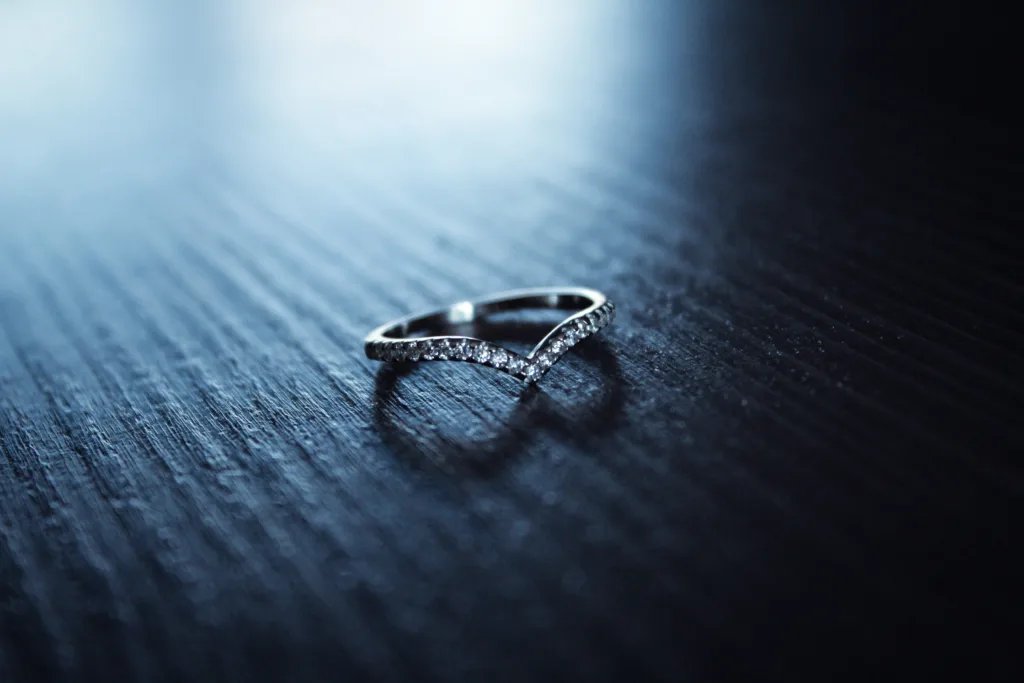Sterling silver is a popular metal for jewelry, flatware, and other decorative items due to its beauty and durability. However, many people are unsure whether sterling silver is magnetic or not. The answer is that it depends on the composition of the silver.
Pure silver is not magnetic, wich means that if you have a piece of sterling silver that is 100% silver, it will not be magnetic. However, most sterling silver items are not pure silver. They are typically made up of 92.5% silver and 7.5% other metals, usually copper.
Copper is also not magnetic, so if your sterling silver piece only contains copper as its secondary alloy, it will not be magnetic. However, some manufacturers may use other metals as the secondary alloy, such as nickel or iron.
If your sterling silver piece contains nickel or iron, it may be slightly magnetic. This is because nickel and iron are ferromagnetic, which means they are attracted to magnets. However, the amount of nickel or iron in a sterling silver piece is usually very small, so the magnetism will be weak.
To test whether your sterling silver piece is magnetic or not, you can simply use a magnet. Hold the magnet near the piece and see if it is attracted to it. If the magnet does not stick, then your piece is most likely pure sterling silver or contains copper as its secondary alloy. If the magnet does stick, then your piece may contain nickel or iron.
It is worth noting that the magnet test is not foolproof. Some fake silver or silver-plated items are also made of non-magnetic metals, so just because your piece is not magnetic does not necessarily mean it is real sterling silver. Other tests, such as the acid test or the density test, may be needed to determine the authenticity of your silver piece.
The magnetism of sterling silver depends on its composition. Pure silver and copper are not magnetic, but if the piece contains nickel or iron as its secondary alloy, it may be slightly magnetic. The magnet test is a quick and easy way to determine whether your sterling silver piece contains these metals, but it is not a definitive test for authenticity.
How Can You Tell Real Sterling Silver From Fake?
There are a few methods to determine whether a piece of silver is genuine sterling silver or a fake.
1. Look for hallmarks: Sterling silver items are usually stamped with hallmarks that indicate their purity. These hallmarks may include the number 925, the word “sterling,” or an image of a lion’s head. If an item does not have any hallmarks, it is likely not genuine sterling silver.
2. Conduct a nitric acid test: This test involves applying nitric acid to a small area of the item and observing the reaction. If the item turns green, it is likely not genuine sterling silver.
3. Use a magnet: As mentioned earlier, if a magnet sticks strongly to the item, it is not genuine silver. Genuine silver is not magnetic.
4. Conduct a sound test: Sterling silver has a distinct sound when tapped or dropped onto a hard surface. It produces a clear, high-pitched ring. If an item sounds dull or thud-like, it is likely not genuine sterling silver.
5. Check the weight: Genuine sterling silver is heavier than most oter metals. If the item feels lightweight, it is likely not genuine silver.
It is important to note that some fake silver items may pass one or two of these tests. Therefore, it is recommended to use a combination of methods to determine the authenticity of an item.

Will A Magnet Stick To Silver Plated?
Silver plated items are typically made by coating a base metal, usually copper, with a layer of silver. Therefore, if a magnet is able to stick to a silver plated item, it is a clear indication that the item is not made of silver or copper. This is because both silver and copper are non-magnetic materials, which means that they do not attract magnets.
If you find that a magnet is sticking to a silver plated item, you can be sure that it is not made of silver or copper.
How Can You Tell If Something Is Solid Silver Or Silver Plated?
To determine whether an object is made of solid silver or silver plate, you can perform various tests. One of the easiest methods is to examine the markings on the object. Look for a stamp or hallmark that indicates the silver content. For instance, if you see the numbers 925 or 800, it means that the object is made of solid silver. However, if you see the letters EPNS or EPBM, it suggests that the object is silver plated.
Another way to tell if something is solid silver is to perform a scratch test. Use a sharp blade or a small file to scratch the surface of the object in an inconspicuous area. If the scratch leaves a deep mark that reveals a different color bneath the surface, the object is likely silver plated. In contrast, if the scratch is shallow and reveals the same color throughout, it indicates that the object is solid silver.
You can also test the weight of the object. Solid silver is denser than silver plate, so a similarly sized object made of solid silver will weigh more than its plated counterpart. However, keep in mind that this method is not entirely reliable, as the weight may vary depending on the design and thickness of the object.
Lastly, you can use a magnet to determine if an object is made of solid silver or silver plate. Silver is not magnetic, so if a magnet sticks to the surface of the object, it suggests that it is made of metal coated with silver. However, if the magnet does not stick, it may still be solid silver, as some types of silver alloys may exhibit slight magnetic properties.
Why Is My Sterling Silver Ring Magnetic?
If you find that your sterling silver ring is magnetic, it is likely due to the presence of a secondary alloy such as nickel or iron. Sterling silver is typically composed of 92.5% silver and 7.5% of other metals, which are added to increase the durability and strength of the metal. While silver and copper, which is often used as the secondary alloy in sterling silver, are diamagnetic and repel magnets, nickel and iron are ferromagnetic and can be attracted to magnets. Therefore, if your sterling silver ring contans nickel or iron, it may exhibit magnetic properties. It is important to note that if your sterling silver piece does not contain these metals, it should not be magnetic.

Conclusion
Sterling silver is not magnetic in its pure form. However, if it contains nickel or iron as its secondary alloy, then a magnet might stick to it. This is because these metals are ferromagnetic, unlike silver and copper, which are diamagnetic and repel magnets. Therefore, the magnet test can be an easy and quick way to determine whether an item is made of solid silver or silver plate. If the magnet sticks strongly to the piece, then it is likely not silver, but raher a different metal coated with silver. It is essential to know the properties of sterling silver to make informed decisions when purchasing or identifying silver items.
